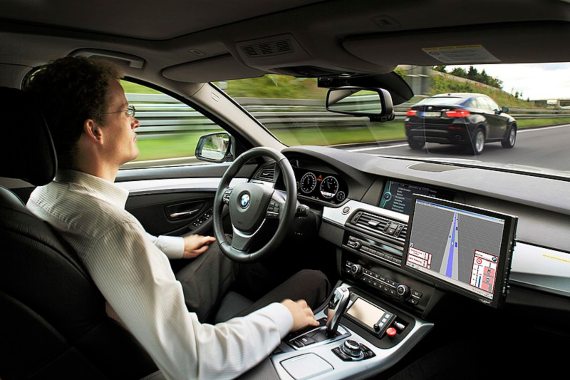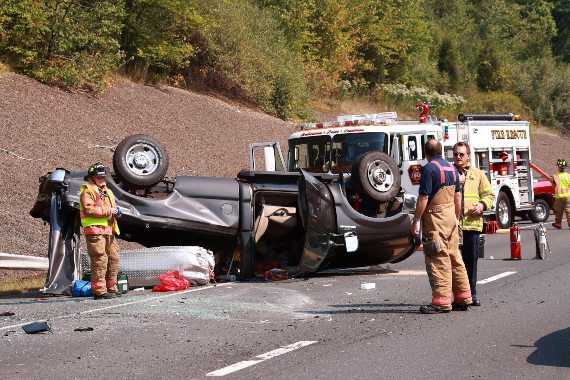“ We always overestimate the change that will occur in the next two years and underestimate the change that will occur in the next ten”.
Bill Gates
Cars, and other human-driven vehicles, will change dramatically in the coming decades – particularly in the way that they are driven. There will be a trend away from human-driven to autonomous vehicles that will have a momentous impact on our lives and society. Five years ago, some experts were predicting that fully autonomous cars would have been on our streets by now. However, that has not yet happened mainly due to some accidents in recent years that had attracted adverse media attention. This has brought about some nervousness regarding their acceptability with the public at large. This has led to automobile manufacturers rethinking their timetables. However, this is likely to be a temporary setback until other issues are resolved. In the longer term, the adoption of this technology is inevitable. In this article, I look briefly at the current activity, the setbacks, and at the way that safety concerns may be resolved. I conclude this article by gazing into the crystal ball to see how these machines will change our relationship with driving during the coming decades. There are, however, different levels of autonomy ascribed by the automobile industry, and these are described in the next section.

Levels of autonomy
There exist six levels of car autonomy as defined in 2014 by the Society of Automotive Engineers (SAE). They take values on a scale from 0 to 5 Level 0 refers to complete driver control, with Level 5 at the other extreme representing completely autonomy in any environment. Other values represent intermediate levels of autonomy.
Level 0: Human Control.
All car operational functions are under human driver control. This does not exclude warning indicators that alert the driver to attend to something, such as low fuel.
Level 1: Driver Assistance.
At this level, technologies, such as Automatic Emergency Braking (AEB) or cruise control, may be controlled by the car to assist the driver, one at a time.
Level 2: Partial Automation.
At least two simultaneous automated functions may be controlled by the car. For example, acceleration and steering may assist the driver, but the human driver is still always in control.
Level 3: Conditional Autonomy.
The car can manage all safety-critical functions under certain conditions, but the driver is expected to take over if and when alerted. The driver must remain vigilant even when the car is under autonomous control.
Level 4: Pre-Defined Autonomy.
The car is fully-autonomous in some driving scenarios, though not all. Fully autonomous in pre-defined environments requiring no human driver intervention.
Level 5: Fully Autonomous.
The car is completely capable of self-driving in every situation anywhere without any driver intervention.
At present, there are several cars on the road offering up to Level 2 driving functionality. The Tesla Model 3 car has a feature called Autopilot that gives level 3 autonomy. It was first introduced in 2014 and can be invoked by the driver at any time. The Audi A8 is ready for use but awaiting approval for use on the roads in many countries, but there is still some uncertainty about whether it will be released as level 3. The Ford motor company hope to have a Level 4 car completed by the end of the year 2021. Level 5 autonomy is still some way off.
Current activity with autonomous vehicles
There are about 1.25 million people killed annually on the roads and most of these accidents are due to human driver error. The widespread adoption of autonomous cars will reduce this number substantially. As well as these safety incentives, autonomous cars will create many other benefits for society and the environment. At the current point in time, self-driving car technology is not yet ready for widespread adoption but there can no longer be any doubt about its viability. Long distances are now routinely test-driven in cities and other environments using self-driving vehicles. Many of these vehicles provide taxi services, such as Waymo, the autonomous car company owned by Google’s parent company Alphabet. Their autonomous cars have driven more than 10 million miles on roads and has offered more than 100,000 rides through its service in Arizona. Uber also provide taxi and sharing services, and many other uses are planned. Most of the traditional automobile industry manufacturers are developing autonomous cars and we are very likely to see large numbers of these vehicles in our cities within the next few decades.
Setbacks
Despite the achievements to date, a small number of accidents have occured using autonomous cars. Amongst those attracting most media attention happened in Florida USA, when a level 3 autonomy Tesla Model 3 car drove into a large truck. The car owner was killed. Investigators determined that the crash was caused by the truck driver’s failure to yield to the car’s right of way — combined with human inattentiveness while relying on Autopilot. When the Tesla car was released, it included an optional feature called Autopilot – a self-driving capability that the user was free to invoke and thus enjoy a more relaxed driving experience. However, the Tesla organisation were insistent that human drivers should keep alert with their hands on the wheel even when Autopilot was invoked. Furthermore, test results show that the number of accidents in this Tesla model is far lower when Autopilot is on.

Nevertheless, accidents are going to happen in autonomous vehicles and they will attract disproportionate media attention compared to human-driver accidents because of our curiosity with this new technology.Driver inattentiveness is, some would say, inevitable when the car is driving itself. This is because human drivers become disengaged in these situations and their attention may easily become diverted to other things. This means that they will struggle to regain an understanding of the context fast enough to take back control safely. This is becoming the Achilles Heel of fully autonomous cars because they will inevitably encounter conditions that they cannot cope with resulting from unlearned experiences. Humans can fall back on common-sense when we encounter a new experience – autonomous cars can’t. That’s why it’s difficult to move beyond level 3 autonomy – the driver must be vigilant even when the car is ander autonomous control. These unusual experiences may be very rare but are having an important bearing on their take up. One way of moving beyond this impasse may happen via a technological breakthrough called 5G.
The 5G rollout
A series of technology advances outside the cars are coinciding to make autonomous cars safer on our roads – in particular, 5G (Fifth Generation) cellular networks. Many now believe that a safe rollout of autonomous vehicles is highly dependent upon 5G. For example, according to Bijan Khosrave, writing in Forbes: “Autonomous cars will become a reality, but it won’t happen until 5G data networks are ubiquitous”. He goes on to say that the current 4G networks do not have the online human-like reflexes to give these vehicles the capability to prevent accidents. 5G offers super-fast broadband speeds, that will facilitate the connection of roadside sensor devices connected to the Internet and use AI to make rapid in-car decisions to ensure greater safety. This means that building roadside sensors and creating a “smart road” infrastructure will facilitate the rollout of autonomous cars. Roadside sensors will reduce the computing load on car-mounted systems because the vehicles won’t have to make as many rapid decisions. This could be important because car-mounted sensors are sometimes disoriented by the materials used for the road surface. They can also be sensitive to reflective buildings and the weather. Roadside sensors are also less susceptible to movements than in-car sensors. This means that 5G seems to hold the key along with a “smart road” infrastructure. However, a combination of the coronavirus and political factors could set back the rollout of 5G for some years. For example, in the UK, 5G rollout was being predicted to happen by 2025 but may now be delayed to 2030 or even later.
The likely progression of autonomous car use on our roads
In the short term, there will continue to be, a gradual rollout of autonomous technology in niche applications. Their use may initially be limited to shuttle service type tasks as taxi pods in constrained urban environments. Some of these systems are already in use. For example, up to 40 autonomous pods have been operational in a trial in the city Centre of Milton Keynes in the UK. It’s very likely that slow shuttle pods may be used in the short term in many other transport systems. Waymo, the autonomous car company owned by Google’s parent company Alphabet, have recently announced extended taxi services in parts of Phoenix, Arizona. Whilst the service is only currently available in a limited area it offers more flexibility in travelling through many routes.
In the medium term, machines will have to share roads with human drivers – at some point in time in fairly equal proportions. Some difficulties are envisaged during this period because the machines will have to come to terms with the unpredictability of human drivers. Conversely, human drivers will have to come to terms with unanticipated behavior of machines. For instance, many collision accidents between human and autonomous cars are rear-end collisions caused by humans who drive too close failing to brake promptly because the autonomous car in front of them stopped unexpectedly. This sometimes happens because autonomous cars lack the common-sense knowledge to know if an obstacle on the road is dangerous and therefore, may take extreme action through an emergency stop.

In the longer term, as the 5G infrastructure comes to life, it’s predicted that the roads become more amenable to machines with machine-readable sensors dominating the roadsides. Improved safety would mean that fully autonomous cars are likely to be built from lightweight composite material. As machines become the dominant driving source, it’s also likely that there will be a large reduction in the number of cars in use. That is because the users of fully autonomous cars would probably be offered access rather than having sole ownership. This type of usage is becoming common nowadays with music and video film users. For example, many music listeners now subscribe to services like Spotify, rather than purchasing vinyl records or CDs that require physical space for storage. In the same way, it is likely that owning a car will become less common as ownership may not be important if a taxi call is available very quickly. This is likely to happen in an age of fully autonomous vehicles because they would not be dependent upon human drivers being instantly available. According to the think tank RethinkX , autonomous cars will be fleet owned, possibly by the car manufacturers by 2050. This means that the vast areas of land, hitherto used for car parking will become available. At present, individuals that buy cars have sole use. This means that they spend about 97% of their time unused – in garages, car parks, or roads. With populations set to rise in the years ahead reclaiming land could be an important benefit for humankind as well as the safety issues described earlier in this article.
Keith Darlington
Comments on this publication